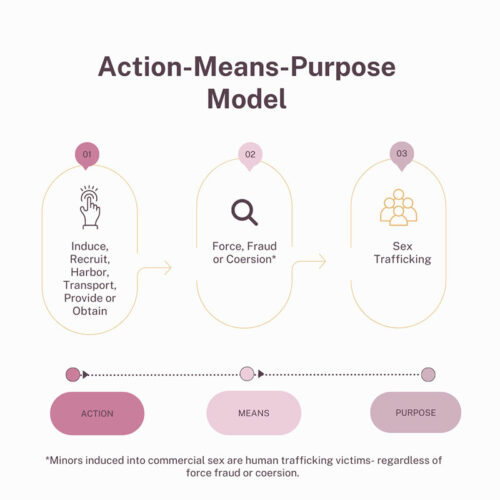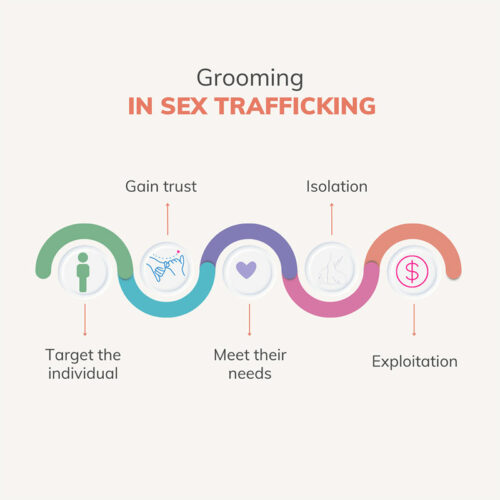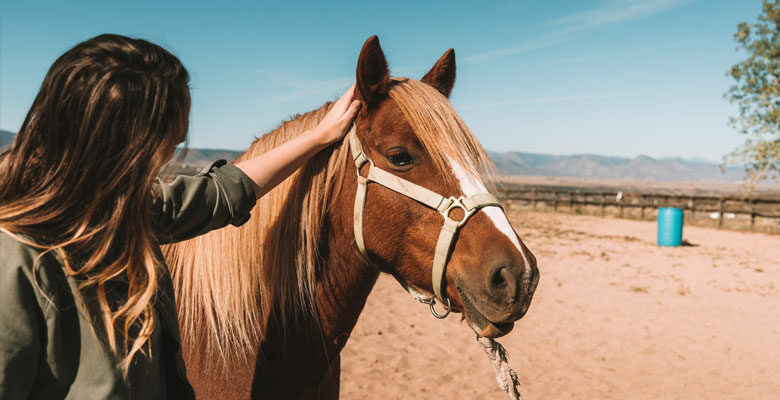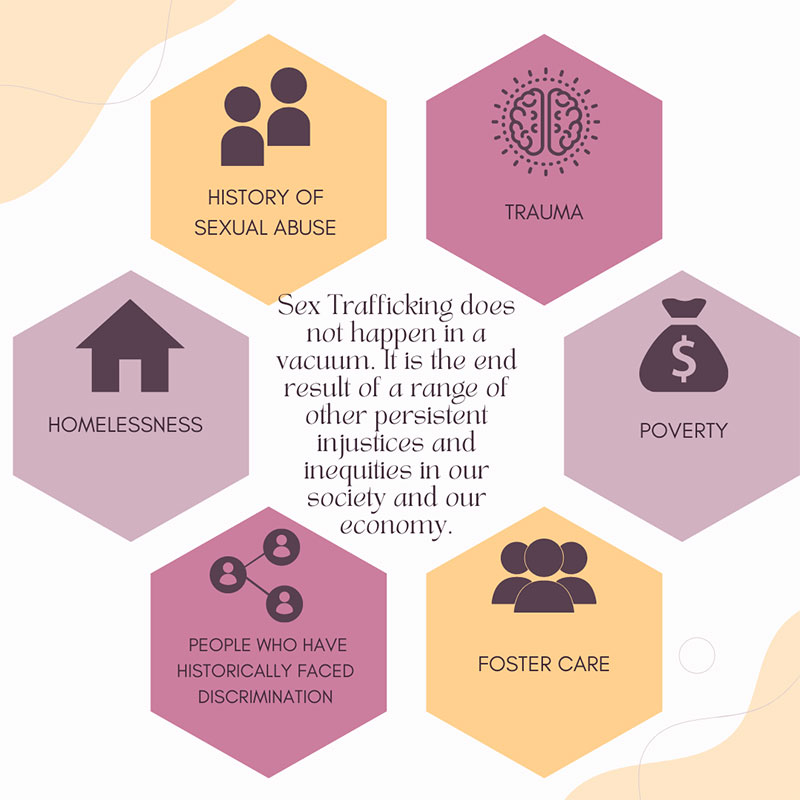Ever seen the movie Taken? Released in 2008, this movie featured a father, Liam Nesson, passionately fighting to save his daughter after she was kidnapped and brought into a sex trafficking ring. Though the movie’s goal was entertainment rather than education, even after 14 years, the anti-human trafficking movement has still found itself trying to debunk myths that this movie perpetuated. Taken incidentally created a common misunderstanding of what sex trafficking looks like and how it happens.
 In defining sex trafficking, we find it helpful to use a model presented by Polaris Project called the Action-Means-Purpose (AMP) Model. This model helps in understanding federal law in a comprehensive way. Here’s what it says: Sex trafficking happens “when a perpetrator, often referred to as a trafficker, takes an Action (induces, recruits, harbors, transports, provides), and then employs the Means of force, fraud or coercion for the Purpose of compelling the victim to provide commercial sex acts (sex trafficking). At a minimum, one element from each column must be present to establish a potential situation of sex trafficking.” “The EXCEPTION to the force, fraud or coercion requirement is that children participating in commercial sexual activity are ALWAYS considered trafficking under federal law. There is no such thing, under federal law, as a child prostitute.”
In defining sex trafficking, we find it helpful to use a model presented by Polaris Project called the Action-Means-Purpose (AMP) Model. This model helps in understanding federal law in a comprehensive way. Here’s what it says: Sex trafficking happens “when a perpetrator, often referred to as a trafficker, takes an Action (induces, recruits, harbors, transports, provides), and then employs the Means of force, fraud or coercion for the Purpose of compelling the victim to provide commercial sex acts (sex trafficking). At a minimum, one element from each column must be present to establish a potential situation of sex trafficking.” “The EXCEPTION to the force, fraud or coercion requirement is that children participating in commercial sexual activity are ALWAYS considered trafficking under federal law. There is no such thing, under federal law, as a child prostitute.”
Who is Targeted?
Traffickers primarily target individuals who have a vulnerability that the trafficker can then offer to fill. This could be anything such as a financial and/or housing need, lack of stability in their family, or even a need for love.
Please note, this graphic is not a full and complete list of all the vulnerabilities that drive sex trafficking, but rather an overview of common vulnerabilities.
What Does Sex Trafficking Look Like?
Sex trafficking looks different in various places. It is highly adaptive, meaning that if we come to understand sex trafficking in just one way, we’ve got the wrong idea and will likely miss it. In the U.S., some common forms of sex trafficking occur through gang control, online exploitation, familial trafficking, and/or what we call “boyfriending”.
Gang Control: When a gang recruits/grooms an individual in order to earn money for the gang through acts of prostitution.
Online Exploitation: The process in which an individual meets and begins to trust someone online. This trust is used to coerce the individual into sex trafficking.
Familial Trafficking: The process in which a family member sells his/her daughter or son into sex trafficking.
“Boyfriending” or Romeo Pimp: The process in which one poses as an individual’s boyfriend in order to coerce and influence the individual into sex trafficking.
In many of these forms of trafficking, grooming is a huge part of maintaining control of the individuals.
 What is grooming? We’re glad you asked.
What is grooming? We’re glad you asked.
“Sex traffickers carefully and methodically work to gain their victims’ trust, create a degree of dependence, and subtly promote the idea that selling sexual services is normal, acceptable and necessary. Ultimately, successful grooming results in vulnerable people cooperating in their own exploitation and abuse and believing they have made the choice to do so independently.” (Polaris Project)
To continue to learn visit polarisproject.org or sharedhope.org.


